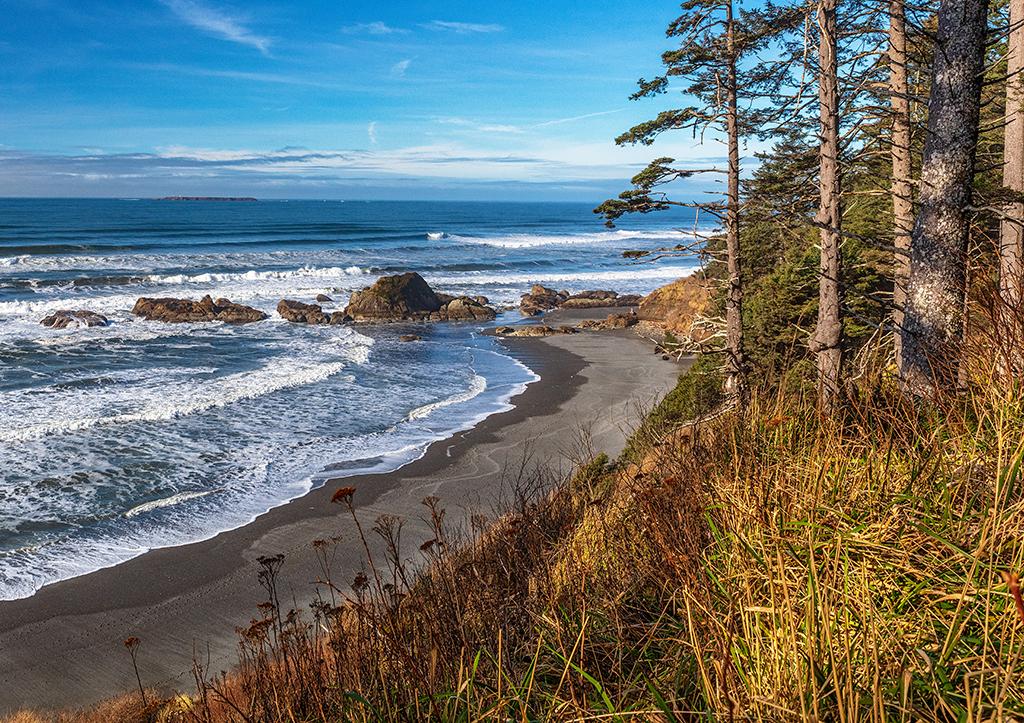
Who manages your public lands in the federal kingdom? Let us explain/Rebecca Latson photo
There are roughly 640 million acres of "public lands" scattered across the United States (including Alaska, Hawai'i, Virgin Islands, and Samoa), and they are managed by different agencies often with differing, if not conflicting, goals.
Let's take a look at those differences.
This agency, established in 1916 by President Woodrow Wilson, manages more than 84 million acres across the National Park Sysem. Places such as Great Smoky Mountains National Park, Everglades National Park, Organ Pipe Cactus National Monument, Craters of the Moon National Monument and Preserve, and National Park of American Samoa. The legislation that created the National Park Service carried a mandate for the agency that lives on today:
"....to conserve the scenery and the natural and historic objects and the wild life therein and to provide for the enjoyment of the same in such manner and by such means as will leave them unimpaired for the enjoyment of future generations."
At times that can be viewed as easier said than done, when you consider the numerous stakeholders and political pressures and influences.
U.S. Bureau of Land Management
This agency was established in 1946, and oversees about 248 million acres with an eye towards "multiple use." Multiple use translates into managing this landscape for a variety of activities, from cattle grazing, logging, and energy exploration, to recreation. Its mission is to the point:
To sustain the health, diversity, and productivity of the public lands for the use and enjoyment of present and future generations.
The BLM, to the chagrin of some, got into the national monument business in 1996, when President Clinton established the Grand Staircase-Escalante National Monument in Utah. Today it also manages Bears Ears National Monument in Utah, Organ Mountains Desert Peaks National Monument in New Mexico, San Juan Islands National Monument in Washington, and California Coastal National Monument in California, along with others.
The Forest Service is charged with stewarding 193 million acres in places such as the Bridger-Teton National Forest in Wyoming, the Nantahala National Forest in North Carolina, Apalachicola National Forest in Florida, and the Olympic National Forest in Washington state. It might surprise some, but the Forest Service also manages lands largely devoid of trees, such as the Buffalo Gap National Grassland in South Dakota, and the Comanche National Grassland in Colorado. Its mission is straightforward:
To sustain the health, diversity, and productivity of the Nation’s forests and grasslands to meet the needs of present and future generations.
U.S. Fish and Wildlife Service
This agency takes care of about 95 million terrestrial acres, as well as 740 million acres of "submerged lands and waters." Most of its land holdings are in the form of wildlife refuges, places such as the Agassiz National Wildlife Refuge in Missouri, the Big Stone National Wildlife Refuge in Minnesota, and the Oxbow National Wildlife Refuge in Massachusetts. But it has other responsibilities, too, such as managing the National Bison Refuge in Montana and the Papahanaumokuakea Marine National Monument in the Pacific Ocean northwest of Hawai'i. Its mission statement:
Work with others to conserve, protect and enhance fish, wildlife and plants and their habitats for the continuing benefit of the American people.
This agency, established in 1902, oversees dams and reservoirs in 17 Western states, places such as Hoover Dam in Nevada and the Grand Coulee Dam on the Columbia River in Washington state. As such, it oversees quite a bit of water-based recreation. Its mission statement could apply to beavers:
The mission of the Bureau of Reclamation is to manage, develop, and protect water and related resources in an environmentally and economically sound manner in the interest of the American public.
Far and away, most federal lands are located in the West and Alaska. Those who grew up in the East and never crossed the Mississippi have never touched BLM lands.
As you look across the federal kingdom of public lands, and the agencies that manage them, you can see where conflicts might arise. After all, while the Park Service is tasked with preserving landscapes and wildlife, the BLM is to produce the most from the lands it manages, whether that be by allowing mining, grazing, or logging. Those differences raise concerns when it comes to having the BLM, not the NPS, manage national monuments.
The concerns have been heightened in recent months -- rightly or wrongly -- by the Trump administration's move to reorganize the Interior Department in a way that leaves directors of the National Park Service, U.S. Fish and Wildlife Service, and U.S. Bureau of Land Management left largely powerless to manage their agencies while political appointees drive them.

 Support Essential Coverage of Essential Places
Support Essential Coverage of Essential Places






